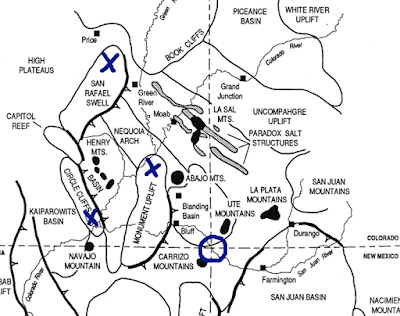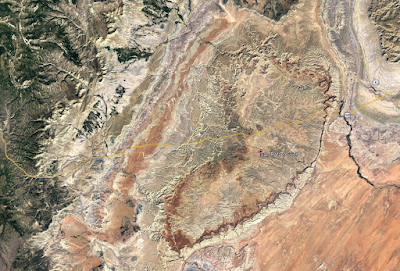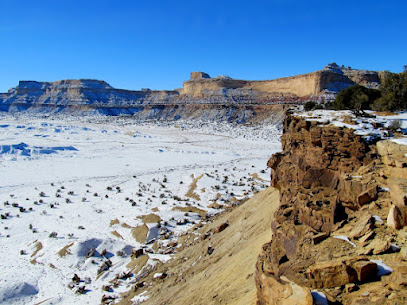Two small items have triggered this report: 1) I belong to the Baltimore Mineral Club and at our last meeting we talked (by ZOOM) about the element antimony and the mineral stibnite; and 2) a former student of mine, now living in Alaska, told me that the June 5th edition of dermoitcole.com/reporting from Alaska/ had a story about trucking antimony ore from Alaska to a smelter in Montana. Sure enough, the story stated there is a “push to mine antimony in the Fairbanks area, as well as in Tok and off the Denali Highway. With export restrictions by China, the price of antimony has soared in the past year from $13,000 a ton to ~$50,000 per ton. U.S. Antimony says it’s looking to truck antimony ore some 2,000 miles from Alaska to its processing plant in Montana. That operation could start as soon as September.”
Wow, that’s interesting. So, where does the U.S. currently mine stibnite, the major ore of antimony? It seems that at the present time there are no antimony-producing mines in the U.S. That little tidbit led me to another story in Forbes.com about the fact that without antimony produced here in the United States, the outcome of World War II might have turned out differently. Read on.
No, really, it could have. Antimony is a strategic critical mineral that is used in all manner of military applications, including the manufacture of armor piercing bullets, night vision goggles, infrared sensors, precision optics, laser sighting, explosive formulations, hardened lead for bullets and shrapnel, ammunition primers, tracer ammunition, nuclear weapons and production, tritium production, flares, military clothing, and communication equipment. It is the key element in the creation of tungsten steel and the hardening of lead bullets, two of its most crucial applications during WWII.
Prior to the buildup to the War, the United States was almost entirely dependent on China for its supply of antimony. When that supply was cut off by Japan, America had to find another source of this key mineral. Fortunately for the U.S. at that time, a gold mine in central Idaho called the Stibnite Mine was able to step up production of the antimony that is an element in the mine’s ore and helped fill the void.
The Stibnite mine ended up producing fully 90% of America’s demand for antimony for the duration of the War and was key to producing 40% of the tungsten steel needed for the military effort. Following the War, output from the Stibnite Mine gradually declined, and its operations were shut down entirely in 1997.
Interesting, eh? Read on from Metaltechnews.com.
So back to today’s world where United States Antimony owns and operates an antimony smelter in Montana – the only facility on American soil designed to upgrade raw antimony feedstock into antimony oxide used to make flame-resistant compounds for home and military use, antimony metal for bearings and artillery, and antimony trisulfide for ammunition. But as noted, the U.S. does not mine antimony. That means the Montana-based company is reliant on imports from Mexico and other countries for the raw materials to feed its smelter. So maybe Alaska does not seem so far away from Montana.
Today, the U.S. finds itself once again wholly reliant on other countries for its antimony needs, most heavily China and to a lesser extent, Russia (before the War in Ukraine). The global demand for antimony in the coming years cannot be met from current supplies. If true, this will impact all of us in a variety of ways, because antimony is a crucial element in far more than just military applications.
However, the News gets worse since at the end of last year China banned exports of antimony to the U.S. Considering that China controls roughly half of the global antimony production – Tajikistan and Russia account for another 30% of global supply – this ban leaves the U.S. with few options for this critical and strategic metalloid.
From Oilprice.com we learn that after China banned exports to the U.S. Prices had already doubled in the second half of 2024 since China said in August that companies would need to apply for export licenses to export antimony ore, metals, oxides, hydrides, and other related products.
The ban reverberated through the supply chains and is raising costs for battery makers with expensive and difficult-to-find supply.
In the global antimony market, China is not only the top producer, but also boasts the majority of antimony processing facilities, somewhat analogous to China’s role in REEs production, the U.S. Geological Survey says.
So, that led me to this story from USantimony.com. On March 17, 2025, a two-container international shipment of approximately fifty (50) tons of stibnite (antimony) ore, departed the port of loading in Melbourne, Australia, with the final destination and port of discharge to be at the Port of Manzanilla, Mexico for ultimate delivery to the United States Antimony Corporation ("the Company") Madero Smelter. The Company made partial payment on the value of the shipment’s invoice, equaling $715,413 USD, ahead of the actual time of departure as called for under the existing contract. Evergreen Shipping Agency (Australia) PTY Ltd., the shipping agency, routed the vessel through The Port of Ningbo-Zhoushan in China. The vessel’s actual time of arrival in Ningbo was April 14, 2025. All necessary payments and required paperwork were properly accounted for. Chinese Customs withheld these two containers carrying stibnite (antimony) ore for approximately eighty-two (82) days with no apparent reason provided to all parties involved
On June 23, 2025, the Company was informed that Chinese Customs finally agreed to release the containers on the condition that they be returned to their point of origin/loading dock in Australia. The Chinese Customs would not release the shipment to their intended final destination to the Port of Manzanillo for their final delivery location at the Company’s Madero Smelter. The Company can only assume this was either due to the contents being antimony ore, or the owner name, US Antimony Corporation, or possibly both. China previously announced, back in September of last year, a ban on all shipments of antimony ore and finished products originating from China and exported to any country in the world, including the United States.
Forbes.com has given us an interesting scenario: consider antimony’s usage in the high-tech sector, where it is a key ingredient in semi-conductors, circuit boards, electric switches, fluorescent lighting, high quality clear glass and lithium-ion batteries. No antimony, no iPhones. No hi-definition TVs. No modern kitchen appliances, all of which make use of digital circuitry. Oh, and that car you’re thinking about buying? Sorry.
Now, consider this: There can be no “energy transition” without adequate supplies of antimony. That thick, heavy glass used in solar panels? It’s made with antimony. Those 300 to 700 foot-tall windmills that sporadically produce electricity? Made with antimony. Antimony is a key element in the manufacture of lithium-ion batteries, as mentioned above, but even more crucial is the fact that it is integral to the development of the next-generation liquid metal batteries that, as Ecclestone pointed out during the webinar, hold the key to truly scalable energy storage for wind and solar power.
It seems almost unbelievable that this country has allowed itself to become almost 100% dependent on imports of a metal integral to so many applications as antimony. Of course, the U.S. is also in a similar situation related to better-known critical minerals like lithium and cobalt, which are also key to the production of solar panels, wind turbines and lithium-ion batteries.
The last news that I could find is that United States Antimony Corporation (NYSE American: UAMY) is bringing antimony mining back to the U.S. The company recently announced that it has started buying land and mining claims near its old smelter in Thompson Falls, Montana. This move could help reduce America’s heavy dependence on foreign sources of antimony---when it finally starts production.
Above information in this article, compiled in mid-July, 2025, has been taken from various sources: Oilprice.com, Forbes.com, USGS.gov, North of 60 Mining News, Reuters.com, dermoitcole.com, usantimony.com. metaltechnews.com. Want to learn more? Get on a web browser and start hunting—there are hundreds of dependable (seemly) articles in corporate reports, government reports and articles, journals, newspapers, and you name it. Kind of scary!


















